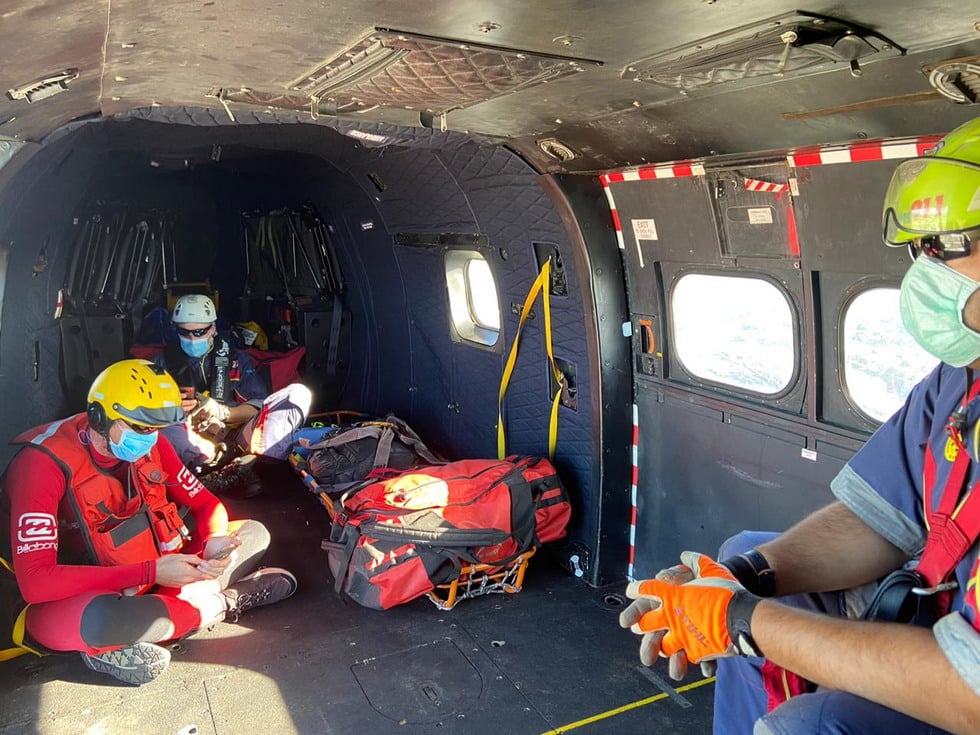- Home
- Magazines
-
Newsletters
- 19 July 2024
- 12 July 2024
- 5 July 2024
- 28 June 2024
- 14 June 2024
- 7 June 2024
- 31 May 2024
- 24 May 2024
- 17 May 2024
- 10 May 2024
- 3 May 2024
- 26 April 2024
- 19 April 2024
- 12 April 2024
- 22 March 2024
- 15 March 2024
- 8 March 2024
- 1 March 2024
- 23 February 2024
- 16 February 2024
- 9 February 2024
- 26 January 2024
- 19 January 2024
- 12 January 2024
- 22 December 2023
- 1 December 2023
- 24 November 2023
- 10 November 2023
- 3 November 2023
- 27 October 2023
- 20 October 2023
- 13 October 2023
- 6 October 2023
- 29 September 2023
- 22 September 2023
- 15 September 2023
- 8 September 2023
- 25 August 2023
- 18 August 2023
- 11 August 2023
- 4 August 2023
- 28 July 2023
- 21 July 2023
- 14 July 2023
- 7 July 2023
- 30 June 2023
- 23 June 2023
- 15 June 2023
- 2 June 2023
- 26 May 2023
- 19 May 2023
- 12 May 2023
- 5 May 2023
- 28 April 2023
- 21 April 2023
- 14 April 2023
- 6 April 2023
- 31 March 2023
- 24 March 2023
- 17 March 2023
- 10 March 2023
- 3 March 2023
- 24 February 2023
- 17 February 2023
- 10 February 2023
- 3 February 2023
- 27 January 2023
- 13 January 2023
- 22 December 2022
- 15 December 2022
- 9 December 2022
- 2 December 2022
- 25 November 2022
- 18 November 2022
- 11 November 2022
- 4 November 2022
- Advertising
- Subscribe
- Articles
-
Galleries
- AOSH Firexpo 2024
- Midvaal Fit to Fight Fire 2024
- WoF KNP 2023 Gallery
- TFA 2023 Gallery
- DMISA Conference 2023
- ETS 2023 Gallery
- Drager Fire Combat and Rescue Challenge 2023
- AOSH Firexpo 2023
- Midvaal Fit to Fight Fire
- WC IFFD 2023
- NMU 13th Fire Management Symposium 2022
- JOIFF Africa Conference 2022
- ETS 2022 Gallery
- TFA 2022 Gallery
- IFFD 2018
- SAESI
- TFA
- WRC 2018
- WRC 2019
- A-OSH/Securex
- IFE AGM 2019
- ETS Ind Fire Comp Nov 2019
- ETS Challenge 2021
- Drager launch
- Drager Fire Combat and Rescue Challenge 2022
- TFA
- Contact
- Home
- Magazines
-
Newsletters
- 19 July 2024
- 12 July 2024
- 5 July 2024
- 28 June 2024
- 14 June 2024
- 7 June 2024
- 31 May 2024
- 24 May 2024
- 17 May 2024
- 10 May 2024
- 3 May 2024
- 26 April 2024
- 19 April 2024
- 12 April 2024
- 22 March 2024
- 15 March 2024
- 8 March 2024
- 1 March 2024
- 23 February 2024
- 16 February 2024
- 9 February 2024
- 26 January 2024
- 19 January 2024
- 12 January 2024
- 22 December 2023
- 1 December 2023
- 24 November 2023
- 10 November 2023
- 3 November 2023
- 27 October 2023
- 20 October 2023
- 13 October 2023
- 6 October 2023
- 29 September 2023
- 22 September 2023
- 15 September 2023
- 8 September 2023
- 25 August 2023
- 18 August 2023
- 11 August 2023
- 4 August 2023
- 28 July 2023
- 21 July 2023
- 14 July 2023
- 7 July 2023
- 30 June 2023
- 23 June 2023
- 15 June 2023
- 2 June 2023
- 26 May 2023
- 19 May 2023
- 12 May 2023
- 5 May 2023
- 28 April 2023
- 21 April 2023
- 14 April 2023
- 6 April 2023
- 31 March 2023
- 24 March 2023
- 17 March 2023
- 10 March 2023
- 3 March 2023
- 24 February 2023
- 17 February 2023
- 10 February 2023
- 3 February 2023
- 27 January 2023
- 13 January 2023
- 22 December 2022
- 15 December 2022
- 9 December 2022
- 2 December 2022
- 25 November 2022
- 18 November 2022
- 11 November 2022
- 4 November 2022
- Advertising
- Subscribe
- Articles
-
Galleries
- AOSH Firexpo 2024
- Midvaal Fit to Fight Fire 2024
- WoF KNP 2023 Gallery
- TFA 2023 Gallery
- DMISA Conference 2023
- ETS 2023 Gallery
- Drager Fire Combat and Rescue Challenge 2023
- AOSH Firexpo 2023
- Midvaal Fit to Fight Fire
- WC IFFD 2023
- NMU 13th Fire Management Symposium 2022
- JOIFF Africa Conference 2022
- ETS 2022 Gallery
- TFA 2022 Gallery
- IFFD 2018
- SAESI
- TFA
- WRC 2018
- WRC 2019
- A-OSH/Securex
- IFE AGM 2019
- ETS Ind Fire Comp Nov 2019
- ETS Challenge 2021
- Drager launch
- Drager Fire Combat and Rescue Challenge 2022
- TFA
- Contact
|
14 April 2023
|
Military disaster response unit good logic but defence expert has reservations
One not entirely supportive of South African National Defence Force (SANDF) Chief General Rudzani Maphwanya’s envisaged dedicated disaster response unit is respected defence analyst Helmoed Heitman. The top man in the National Defence Force put the concept into the public space ahead of February’s Armed Forced Day (AFD) events during a media briefing in Richards Bay. He said the national defence force is “relooking” at its force design including establishing a dedicated disaster management unit. He put it that the still to become reality unit would have dedicated resources as the SANDF could not continue using what was termed “collateral assets” for disaster management.
Heitman disagrees with Maphwanya, explaining rather than a new unit there is “good logic and sense” in setting up a planning and control and command cell.
“It could evolve as a central cell and [comprise a] staff officer or two per province with direct links to relevant provincial and municipal officials and police commissioners. This, to my mind, would enhance speed and suitability of response to disasters.
“I see the cell then developing response plans for different types of disaster or emergency, identifying SANDF elements best suited to respond – by capabilities and location – and then drawing them into planning and training, if needed. The key element in most disaster situations is disciplined people with communications and a command and control system,” he told defenceWeb, adding it was why the military was often employed in many countries “quite apart from being available in peacetime”.
The rationale as explained by Maphwanya during the AFD media briefing was the envisaged disaster management unit would use own resources. Until now, according to him, the SANDF response has been ad hoc, using military equipment that should be solely for warfighting. With a dedicated disaster response unit, the national defence force will not have to decide on allocating assets to war or disaster relief, he said.
The Joint Operations Division of the SANDF lists four ongoing internal operations as responsibilities. Operation Chariot is specific in that its mandate is “disaster support and humanitarian assistance”. The search and rescue operation – Arabella – could be stretched to include disaster response, as happened with the Oceanos sinking off the then Transkei coast in 1991.
Other full-time taskings resorting under Joint Operations are border safeguarding (Operation Corona) and safety and security (Operation Prosper).
A substantial amount of money goes to SANDF unplanned ad-hoc deployments, which have totalled over half a billion Rand over the last five years. Many are for disaster relief, with commitments ranging from humanitarian assistance to foreign countries to disaster and civil unrest deployments in South Africa. Since 2019, ad-hoc deployments included repatriation of South African citizens from China (Operation Ditaba) in 2020 (R15.5 million), Operation Notlela (COVID-19 response – R876 million in 2020), Operation Ligcoco in 2020/21 and 2022 (citizen repatriation – R9 million plus), 2019 flood relief in Mozambique (R8.5 million), Malawi flood relief the same year (R7.7 million) and Zimbabwe flood relief, also the same year, (R34 million). Responding to flooding in KwaZulu-Natal in 2022 cost R135 million.
Following the July 2021 unrest in South Africa, Operation Prosper expenditure amounted to R416 million. Also under Operation Prosper, deployment of troops to protect Eskom installations cost R37 million in 2022. The ongoing Eskom deployment is estimated to cost R206 million.
Source: Defence Web
Heitman disagrees with Maphwanya, explaining rather than a new unit there is “good logic and sense” in setting up a planning and control and command cell.
“It could evolve as a central cell and [comprise a] staff officer or two per province with direct links to relevant provincial and municipal officials and police commissioners. This, to my mind, would enhance speed and suitability of response to disasters.
“I see the cell then developing response plans for different types of disaster or emergency, identifying SANDF elements best suited to respond – by capabilities and location – and then drawing them into planning and training, if needed. The key element in most disaster situations is disciplined people with communications and a command and control system,” he told defenceWeb, adding it was why the military was often employed in many countries “quite apart from being available in peacetime”.
The rationale as explained by Maphwanya during the AFD media briefing was the envisaged disaster management unit would use own resources. Until now, according to him, the SANDF response has been ad hoc, using military equipment that should be solely for warfighting. With a dedicated disaster response unit, the national defence force will not have to decide on allocating assets to war or disaster relief, he said.
The Joint Operations Division of the SANDF lists four ongoing internal operations as responsibilities. Operation Chariot is specific in that its mandate is “disaster support and humanitarian assistance”. The search and rescue operation – Arabella – could be stretched to include disaster response, as happened with the Oceanos sinking off the then Transkei coast in 1991.
Other full-time taskings resorting under Joint Operations are border safeguarding (Operation Corona) and safety and security (Operation Prosper).
A substantial amount of money goes to SANDF unplanned ad-hoc deployments, which have totalled over half a billion Rand over the last five years. Many are for disaster relief, with commitments ranging from humanitarian assistance to foreign countries to disaster and civil unrest deployments in South Africa. Since 2019, ad-hoc deployments included repatriation of South African citizens from China (Operation Ditaba) in 2020 (R15.5 million), Operation Notlela (COVID-19 response – R876 million in 2020), Operation Ligcoco in 2020/21 and 2022 (citizen repatriation – R9 million plus), 2019 flood relief in Mozambique (R8.5 million), Malawi flood relief the same year (R7.7 million) and Zimbabwe flood relief, also the same year, (R34 million). Responding to flooding in KwaZulu-Natal in 2022 cost R135 million.
Following the July 2021 unrest in South Africa, Operation Prosper expenditure amounted to R416 million. Also under Operation Prosper, deployment of troops to protect Eskom installations cost R37 million in 2022. The ongoing Eskom deployment is estimated to cost R206 million.
Source: Defence Web
Quick navigation
Social
|
Who are we?FRI Media (Pty) Ltd is an independent publisher of technical magazines including the well-read and respected Fire and Rescue International, its weekly FRI Newsletter and the Disaster Management Journal. We also offer a complete marketing and publishing package, which include design, printing and corporate wear and gifts. |
Weekly FRI Newsletter |
© Copyright 2018 Fire and Rescue International. All Rights Reserved.





